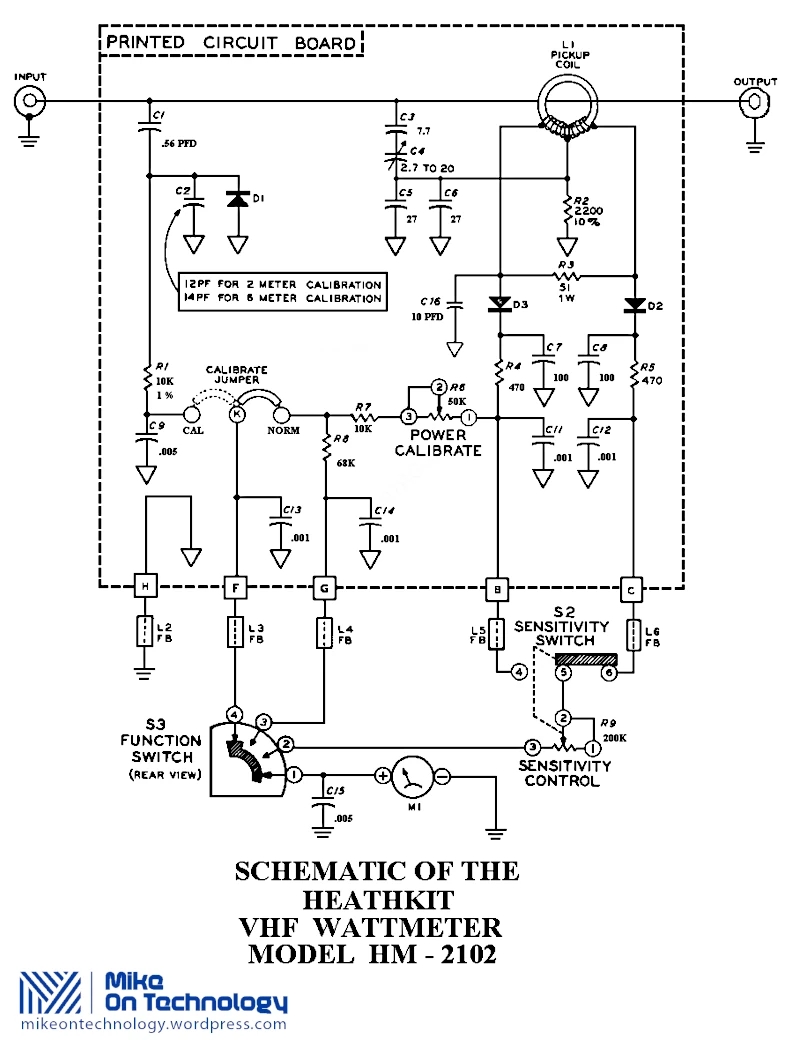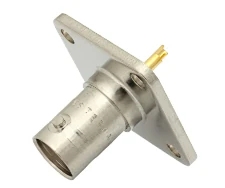The Heathkit HM-2102 VHF Power / SWR Meter for 2 metres was introduced by Heathkit in 1973. The HM-2102 was is able to measure RF output in two ranges. Range 1 is 25W while range 2 is for up to 250W on both bands. Amateurs can use the SWR function to check their antennas too.
Heathkit HM-2102 VHF Power / SWR Meter for 2 metres
The Heathkit HW-2102 is not a precision RF workshop grade instrument. However it is accurate enough for most ham applications. I built one of these meters back in 1975 and it stayed in the shack for many years.
Power Accuracy
Some years after building this meter I had the opportunity to check it against a Bird instrument. Although I never made a record of the calibration, I remember being surprised that I had managed to get the low power range calibration to around 5% or 6%. On the other hand the high power range was about 10% on 2 metres. Originally I had used the makeshift calibration method shown in the instruction booklet.
VSWR Meter Better
However, the meter was a lot more accurate in VSWR mode. I guess that’s because it’s a bridge circuit. Bridge circuits are inherently accurate.
Heathkit HM-2102 Circuit Diagram

The Power/SWR meter is built around a Bruene RF Bridge circuit. This type of true RF bridge was developed by an an engineer at Collins Radio, Warren Bruene. Eventually this RF bridge circuit ended up becoming an industry standard. I won’t go into the technical details of how the bridge works, however maybe later I’ll cover it in another article.
For our purposes here it’s enough to say in Power mode the bridge measure the RF voltage developed thus providing a measurement of output power. The meter is calibrated to read in Watts.
In SWR mode the meter reads the reflected RF voltage. However in SWR mode the meter is calibrated to read the SWR ratio instead.
Building the HM-2102
Heathkit kits had a good name for being easy to build and get working. The 2m Power/SWR meter is no exception. The instruction manual is typical Heathkit and as usual is easy to follow.
With such a simple circuit the PCB takes little time to assemble. Thereafter the rest of the assembly follows. Everything goes together exactly as it should without any fit or other issues. I finished the build of my meter in the space of a few hours during an afternoon.
Mods to Reduce Insertion Loss
 I was also able to test the insertion loss which come to slightly over 1.0db at 145.500 MHz. As I had a couple of spare Greenpar BNC wide flange connectors in stock that fit the holes, so I switched out the SO-239’s for these. A few days later I once again checked the insertion loss. Now it was down to about 0.6 dB
I was also able to test the insertion loss which come to slightly over 1.0db at 145.500 MHz. As I had a couple of spare Greenpar BNC wide flange connectors in stock that fit the holes, so I switched out the SO-239’s for these. A few days later I once again checked the insertion loss. Now it was down to about 0.6 dB
Each BNC connector has an insertion loss of 0.15 dB max from DC – 9 GHz. This adds up 0.3 dB as there are 2 of these.
A good quality SO-239 has a loss of about 0.5 dB at 145 MHz. There you end up with a possible 1.0 dB loss for 2 connectors. By switching out the connectors I ended up with a better meter. It’s not all that much, but I had several of these connectors left over from another job. However the exercise worked out well as the BNC bayonet clip made connecting and disconnecting the meter a whole lot quicker.
More about the HM-2102
https://www.radiomuseum.org/r/heath_vhf_watt_meter_hm_2102.html


